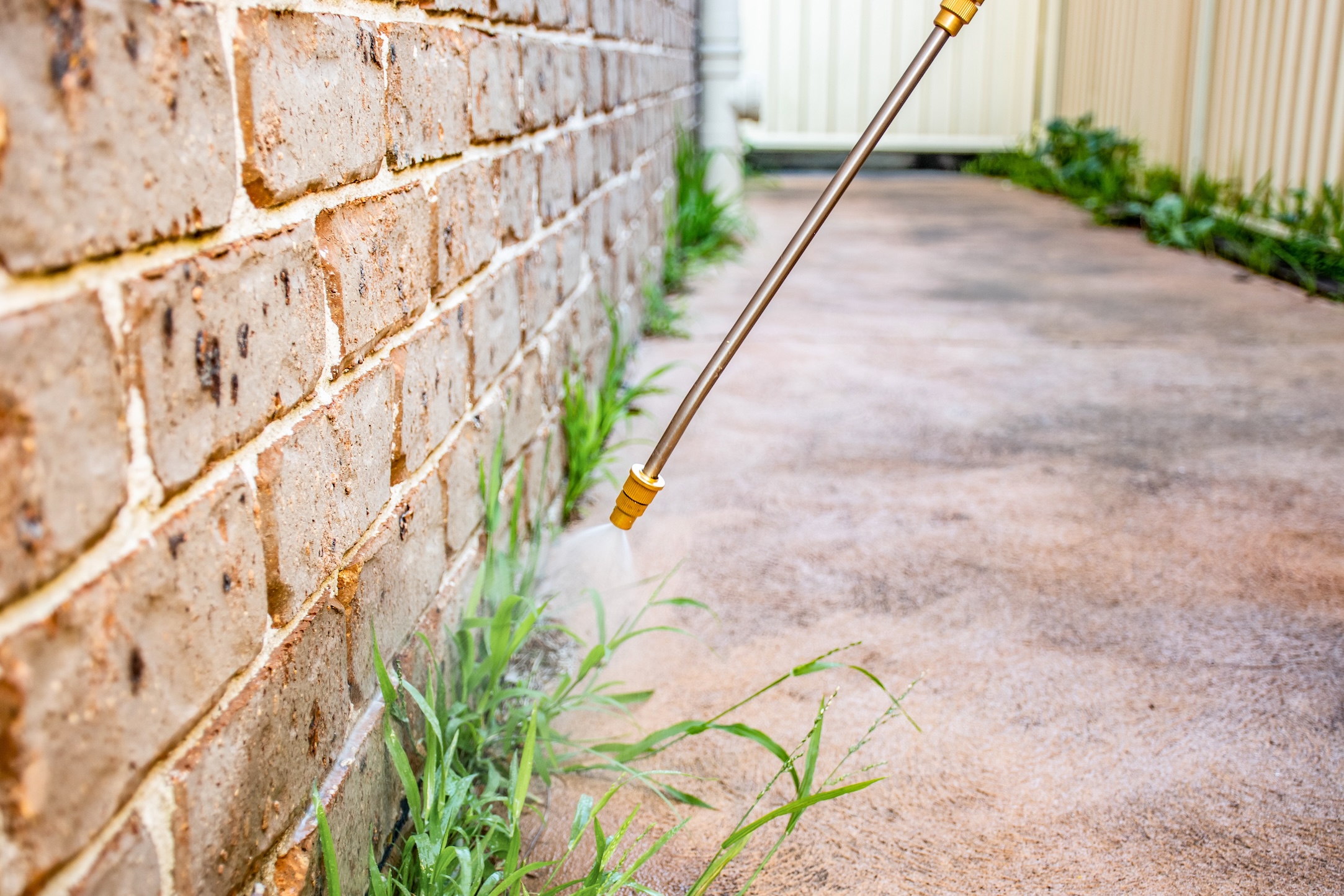Selective Vs. Non-Selective Herbicides
Tackling weeds in your lawn can be a daunting task, and with so many different herbicides out there it can be hard to know which type works best for you. Use this helpful guide as a resource to determine which herbicide you should use in your yard.

You've been taking care of the lawn, it's freshly mowed and it looks great. All your hard work sure is paying off as you look around your property and admire all the green. It looks so nice. What could go wrong? Oh, that's right. Weeds (if you mow it, they will come). But before you go shopping for a weed-killing solution, keep in mind that there are different types of herbicides with specific uses and you could do serious harm to your lawn or other plants if you fail to choose carefully.
What is herbicide? Herbicide is a substance that is toxic to plants and is used to destroy unwanted vegetation.
Contact and systemic herbicides
A contact herbicide kills only the plants or plant parts with which it comes into contact. Generally, these are the fastest acting herbicides, and are most suitable for annual weeds. They are less effective on perennial plants because they can grow new tops from their roots, tubers or rhizomes. If you want to attack weeds within a particular area, or perhaps even a particular weed, then a contact weed killer may be what you're looking for. Take care not to get any of the herbicide on neighboring plants that you want to keep. Contact weed killers are available in selective and non-selective forms (more on those in a moment).
The other main herbicide category type is systemic. Systemic herbicides kill weeds right to the roots. Once on the foliage, the systemic herbicide is transported throughout the entire plant and into the roots, killing the plant from within. This type of herbicide is perfect to treat invasive weeds and broad-leafed weeds, in order to stop them from growing again and again. With this type of weed killer, it could take up to two weeks before plants are completely eradicated and results are noticed. These, too, may be applied to specific plants without damaging others that are close by.
Within these two main categories, herbicides may also be selective or non-selective.
Selective herbicides
Selective herbicides are chemicals which can kill certain plant species with little or no damage to other species. There are selective weed killers designed to target monocots (such as grasses or other strappy-leaved plants) or dicots (all other plants, often referred to as "broadleaf" plants). A weed killer for control of weeds in lawns, for example, will kill broadleaf weeds like dandelions and thistles, but will not kill grasses. Selective herbicides are useful when treating weeds in lawns and gardens.
Non-selective herbicides
Non-selective herbicides are chemicals which are toxic to all plants. These herbicides are useful for vegetation control in areas in which no plant growth is desired, such as around buildings, along fence lines, unpaved parking lots, patios, cracks in sidewalks and driveways. A non-selective herbicide is often referred to as broad spectrum. These herbicides make it easy to clean an area when starting a new garden. Non-selective herbicides work in different ways. Some are soil-applied and enter plants through root uptake, providing immediate, as well as soil-residual control. Others are applied through foliage and eliminate existing vegetation, but with little or no residual.
Some other terms found on the label of weed control products:
Pre-emergent herbicides
Pre-emergent herbicides enter the plant through the roots. They are generally most effective when applied before the weeds emerge from the soil. An example is a crabgrass preventer, which prevents crabgrass seeds from establishing new plants. This type of herbicide does not control existing weeds. It is usually applied in spring and fall.
Post-emergent herbicides
Post-emergent herbicides primarily enter the plant through the leaves which means the weeds have already emerged above the soil when spraying occurs. They will control existing weeds, but will not stop new weeds from germinating from seed. This type of herbicide is an excellent tool for controlling existing weeds that have become established.
Keep in mind that the best defense against lawn weeds is proper lawn maintenance. The healthier your lawn is, the less problems you'll have with weeds. When the use of herbicides becomes necessary, always read product labels carefully to ensure that people, pets, livestock and useful vegetation won't be harmed by their use.












